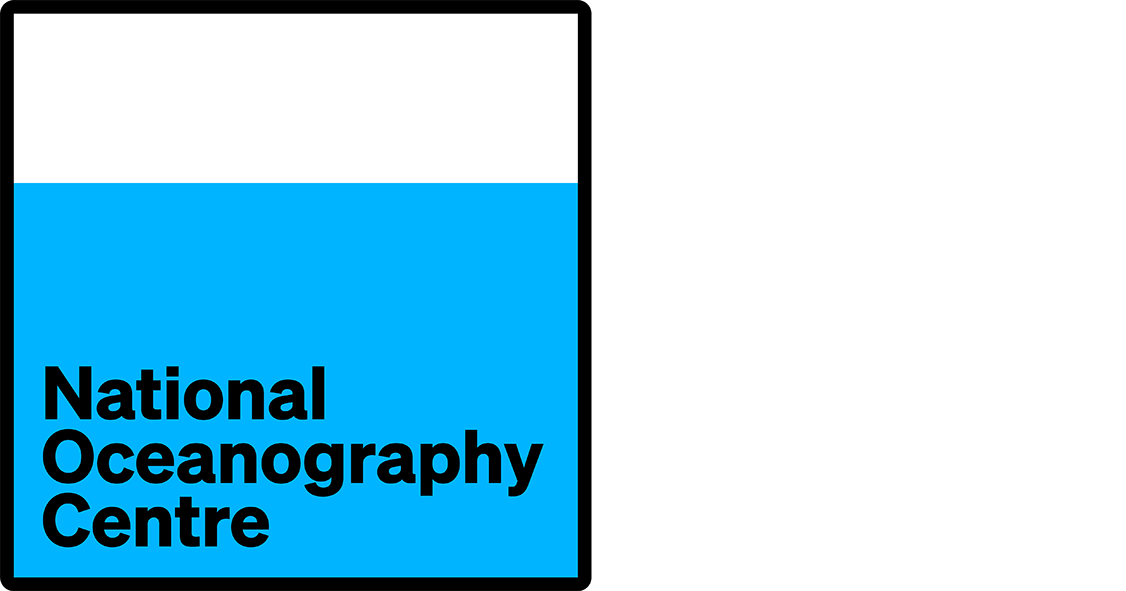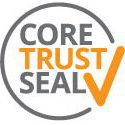Metadata Report for BODC Series Reference Number 2140385
Metadata Summary
Problem Reports
Data Access Policy
Narrative Documents
Project Information
Data Activity or Cruise Information
Fixed Station Information
BODC Quality Flags
SeaDataNet Quality Flags
Metadata Summary
Data Description |
|||||||||||||||||||||||||
|
|||||||||||||||||||||||||
Data Identifiers |
|||||||||||||||||||||||||
|
|||||||||||||||||||||||||
Time Co-ordinates(UT) |
|||||||||||||||||||||||||
|
|||||||||||||||||||||||||
Spatial Co-ordinates | |||||||||||||||||||||||||
|
|||||||||||||||||||||||||
Parameters |
|||||||||||||||||||||||||
|
|||||||||||||||||||||||||
Definition of BOTTFLAG | |||||||||||||||||||||||||
| BOTTFLAG | Definition |
|---|---|
| 0 | The sampling event occurred without any incident being reported to BODC. |
| 1 | The filter in an in-situ sampling pump physically ruptured during sample resulting in an unquantifiable loss of sampled material. |
| 2 | Analytical evidence (e.g. surface water salinity measured on a sample collected at depth) indicates that the water sample has been contaminated by water from depths other than the depths of sampling. |
| 3 | The feedback indicator on the deck unit reported that the bottle closure command had failed. General Oceanics deck units used on NERC vessels in the 80s and 90s were renowned for reporting misfires when the bottle had been closed. This flag is also suitable for when a trigger command is mistakenly sent to a bottle that has previously been fired. |
| 4 | During the sampling deployment the bottle was fired in an order other than incrementing rosette position. Indicative of the potential for errors in the assignment of bottle firing depth, especially with General Oceanics rosettes. |
| 5 | Water was reported to be escaping from the bottle as the rosette was being recovered. |
| 6 | The bottle seals were observed to be incorrectly seated and the bottle was only part full of water on recovery. |
| 7 | Either the bottle was found to contain no sample on recovery or there was no bottle fitted to the rosette position fired (but SBE35 record may exist). |
| 8 | There is reason to doubt the accuracy of the sampling depth associated with the sample. |
| 9 | The bottle air vent had not been closed prior to deployment giving rise to a risk of sample contamination through leakage. |
Definition of Rank |
|
|
Problem Reports
No Problem Report Found in the Database
Data Access Policy
Open Data
These data have no specific confidentiality restrictions for users. However, users must acknowledge data sources as it is not ethical to publish data without proper attribution. Any publication or other output resulting from usage of the data should include an acknowledgment.
If the Information Provider does not provide a specific attribution statement, or if you are using Information from several Information Providers and multiple attributions are not practical in your product or application, you may consider using the following:
"Contains public sector information licensed under the Open Government Licence v1.0."
Narrative Documents
Niskin Bottle
The Niskin bottle is a device used by oceanographers to collect subsurface seawater samples. It is a plastic bottle with caps and rubber seals at each end and is deployed with the caps held open, allowing free-flushing of the bottle as it moves through the water column.
Standard Niskin
The standard version of the bottle includes a plastic-coated metal spring or elastic cord running through the interior of the bottle that joins the two caps, and the caps are held open against the spring by plastic lanyards. When the bottle reaches the desired depth the lanyards are released by a pressure-actuated switch, command signal or messenger weight and the caps are forced shut and sealed, trapping the seawater sample.
Lever Action Niskin
The Lever Action Niskin Bottle differs from the standard version, in that the caps are held open during deployment by externally mounted stainless steel springs rather than an internal spring or cord. Lever Action Niskins are recommended for applications where a completely clear sample chamber is critical or for use in deep cold water.
Clean Sampling
A modified version of the standard Niskin bottle has been developed for clean sampling. This is teflon-coated and uses a latex cord to close the caps rather than a metal spring. The clean version of the Levered Action Niskin bottle is also teflon-coated and uses epoxy covered springs in place of the stainless steel springs. These bottles are specifically designed to minimise metal contamination when sampling trace metals.
Deployment
Bottles may be deployed singly clamped to a wire or in groups of up to 48 on a rosette. Standard bottles and Lever Action bottles have a capacity between 1.7 and 30 L. Reversing thermometers may be attached to a spring-loaded disk that rotates through 180° on bottle closure.
UK Ocean Acidification (UKOA) chl-a, DIC, DO, NH4, NO2, TOxN, PO4, Si, SPM, TA and phaeopigments from bottle samples
Originator's Protocol for Data Acquisition and Analysis
These data were collected from the following CEFAS cruises: 01/13, 02/12, 02/13, 03/11, 05/12, 11/12, 13/11, 13/12, 14/11, 15/11, 15/12, 18/12 and 19/11 that took place in one or more of the North Sea, English Channel, Irish Sea and Celtic Sea between 2011 and 2013. Water samples were obtained either from CTD samples or from Ferrybox samples. CTD samples for discrete measurements were collected at selected depths using a CTD rosette of 10 litre Niskin bottles when visiting moorings for servicing. The CTD rosette was fitted with an FSI integrated CTD (Falmouth Scientific Inc., USA) to provide salinity, temperature and depth data.
Salinity, dissolved oxygen and SPM were collected and analysed according to Greenwood et al. (2010). Water samples for oxygen determination were collected and preserved in triplicate using the Winkler method. Samples were analysed on board using an automatic titration system (Sensoren Instrumente Systeme, Germany), with a photometric endpoint. For measurements of suspended particulate matter (SPM), known volumes were passed through pre-weighed 0.4 µm polycarbonate filters and rinsed with 2 x 50 ml ultrapure water. Filters were then dried in a dessicator at room temperature and weighed until filter weight remained constant. Samples were analysed for salinity using a Guildline 8400B salinometer which had been standardized with IAPSO standard seawater.
Total alkalinity and dissolved inorganic carbon were measured at NOCS according to Dickson et al. (2007).
Samples for nutrient analyses were collected from water bottle rosette sampling systems mounted on the lowered CTD. Each sample was passed through a Whatman GF/F filter and preserved with mercuric chloride to give a final concentration of 20 µg l-1. Samples were stored in the fridge at -18° C until analysed by a Skalar continuous flow analyzer, following Kirkwood (1996).
For chlorophyll measurements, known volumes were filtered through glass fibre filters (GF/F Whatman, UK) in triplicate. Pigments were immediately extracted in 90% buffered acetone and stored in the fridge prior to analysis. A Turner Designs Model 10AU filter fluorometer was used to measure the fluorescence of extracted chlorophyll and phaeopigment before and after acidification following the method described by Tett (1987).
References Cited
Dickson, A. G., Sabine, C. L., and Christian, J. R. 2007. Guide to best practices for ocean CO2 measurements, PICES Special Publication, 3, Sidney, Canada.
Greenwood, N., Parker, E.R., Fernand, L., Sivyer, D.B., Weston, K., Painting, S.J., Kröger, S., Forster, R.M., Lees, H.E., Mills, D.K., Laane, R.W.P.M. 2010. Detection of low bottom water oxygen concentrations in the North Sea; implications for monitoring and assessment of ecosystem health. Biogeosciences 7, p. 1357-1373.
Kirkwood, D. S. 1996. Nutrients: practical notes on their determination in seawater. ICES Techniques in Marine Environmental Sciences, no 17. International Council for the Exploration of the Seas, Copenhagen, p.23.
Tett, P. 1987. Plankton. In: Baker, J. M., Wolff, J. W. (Eds.), Biological surveys of estuaries and coasts. Cambridge University Press, Cambridge, p. 280-341.
Instrumentation Description
Guildline 8400B salinometer, Turner Designs Model 10AU filter fluorometer, Skalar continuous flow analyzer.
BODC Data Processing Procedures
Data were submitted to BODC in 13 individual Microsoft Excel spreadsheets for each cruise. The submission files were saved to the BODC archive with reference MAF140047. The following sample metadata were provided for each cruise: bottle number, cruise, date, time_GMT, Latitude, Longitude, station, sample_depth, water_column_depth and sampling device. The cruise, station, date and time were used to create new entries in the database. Several parameters received were not loaded because they were derived parameters (pH, fCO2, pCO2, HCO3, CO3 and calcite and aragonite saturation states). These variables were calculated from DIC and TA using CO2SYS and are available on request. Where repeat samples were provided, the average and standard were loaded to the database.
For all parameters except dissolved oxygen, no unit conversions were necessary as the units provided matched the units for the BODC parameter codes assigned. Oxygen units were converted as outlined in the table below. The dataset was loaded to the database following BODC protocols.
A parameter mapping table is provided below;
| Originator's Variable | Originator's Units | BODC Parameter Code | BODC Unit | Comments |
|---|---|---|---|---|
| Temperature | ° C | TEMPCU01 | degC | - |
| Pressure | db | PRESPR01 | dbar | - |
| Salinity | Dimensionless | PSALBSTX | Dimensionless | - |
| Dissolved Oxygen | mg l-1 | DOXYWITX | umol/l | unit conversion applied x 62.502 |
| Dissolved Oxygen standard deviation | mg l-1 | SDOXWITX | umol/l | unit conversion applied x 62.502 |
| Chlorophyll | µg l-1 | CPHLFLP1 | mg/m^3 | - |
| Chlorophyll standard deviation | µg l-1 | CLSDFLP1 | mg/m^3 | - |
| Phaeopigments | µg l-1 | PHAEFLP1 | mg/m^3 | - |
| Phaeopigments standard deviation | µg l-1 | PHSDFLP1 | mg/m^3 | - |
| Ammonium | µmol kg-1 | AMONKGD1 | umol/kg | - |
| Total oxidisable Nitrogen | µmol kg-1 | NTRZKGD1 | umol/kg | - |
| Nitrite | µmol kg-1 | NTRIKGD1 | umol/kg | - |
| Phosphate | µmol kg-1 | PHOSKGD1 | umol/kg | - |
| Silicate | µmol kg-1 | SLCAKGD1 | umol/kg | - |
| Suspended Particulate Matter | mg l-1 | TSEDGVP2 | mg/l | - |
| Total Alkalinity | µmol kg-1 | MDMAP014 | umol/kg | - |
| Dissolved Inorganic Carbon | µmol kg-1 | TCO2MSXX | umol/kg | - |
Project Information
UKOARP Theme A: Observations and synthesis to establish variability and trends of oceanic pH
This theme covers a programme of observations, combined with analysis of past and ongoing time series, to determine the magnitude of surface pH variations at seasonal-up-to-decadal time scales. Locations addressed will be the North Atlantic, UK shelf and slope waters, and selected locations in the Southern Ocean and Nordic Seas, using data from time series stations and volunteer observing ships (VOS), measuring three parameters of the marine carbonate system. The observations will be integrated with previous and ongoing international efforts, contributing to the SOCAT dataset, and to the internationally quality-controlled data relevant to ocean pH.
Aims:
- To quantify the rate of progression of ocean acidification in the Atlantic (including European shelf and slope), Southern and Arctic Ocenas, including identification of when/where CaCO3 undersaturation will occur first.
- To quantify spatial and/or seasonal variability of carbonate system parameters in these areas.
- To improve quantification of the rate of oceanic CO2 uptake in these areas.
This theme will maintain/upgrade the following existing pCO2 observations with discrete Total Alkalinity (TA) and Dissolved Inorganic Carbon (DIC) sampling for:
- The UK/Caribbean "Geest" line
- The Pride of Bilbao ferry line
- The Western Channel Observatory (WCO) and Irish Sea Coastal Observatory (ISCO)
- The RRS James Clark Ross (previously funded under CARBON-OPS)
New observations will be established covering:
- Weekly sampling for TA and DIC in Ryder Bay at Rothera base by the British Antarctic Survey. This will expand the Rothera Oceanographic and Biological Time Series (RaTS) to include carbonate chemistry.
- RV CEFAS Endeavour to be equipped with an underway pCO2 measurement system to improve coverage in the shelf seas around England and Wales.
- RV CEFAS Endeavour to sample TA and DIC during scheduled work to build up a dataset for UK coastal waters.
- CEFAS "Smartbuoy" sites to be sampled for TA and DIC upto eight times per year on regular service visits to build up time series for each site.
Weblink: http://www.oceanacidification.org.uk/research_programme/co2_uptake.aspx
Data Activity or Cruise Information
Data Activity
| Start Date (yyyy-mm-dd) | 2013-03-09 |
| End Date (yyyy-mm-dd) | Ongoing |
| Organization Undertaking Activity | Centre for Environment, Fisheries and Aquaculture Science Lowestoft Laboratory |
| Country of Organization | United Kingdom |
| Originator's Data Activity Identifier | 02/13_CTD_CTD304 |
| Platform Category | lowered unmanned submersible |
BODC Sample Metadata Report for 02/13_CTD_CTD304
| Sample reference number | Nominal collection volume(l) | Bottle rosette position | Bottle firing sequence number | Minimum pressure sampled (dbar) | Maximum pressure sampled (dbar) | Depth of sampling point (m) | Bottle type | Sample quality flag | Bottle reference | Comments |
|---|---|---|---|---|---|---|---|---|---|---|
| 884786 | 62.50 | 63.50 | 62.40 | Niskin bottle | No problem reported |
Please note:the supplied parameters may not have been sampled from all the bottle firings described in the table above. Cross-match the Sample Reference Number above against the SAMPRFNM value in the data file to identify the relevant metadata.
Related Data Activity activities are detailed in Appendix 1
Cruise
| Cruise Name | 02/13 |
| Departure Date | 2013-02-15 |
| Arrival Date | 2013-03-14 |
| Principal Scientist(s) | Richard Andrew Ayers (Centre for Environment, Fisheries and Aquaculture Science Lowestoft Laboratory) |
| Ship | RV Cefas Endeavour |
Complete Cruise Metadata Report is available here
Fixed Station Information
No Fixed Station Information held for the Series
BODC Quality Control Flags
The following single character qualifying flags may be associated with one or more individual parameters with a data cycle:
| Flag | Description |
|---|---|
| Blank | Unqualified |
| < | Below detection limit |
| > | In excess of quoted value |
| A | Taxonomic flag for affinis (aff.) |
| B | Beginning of CTD Down/Up Cast |
| C | Taxonomic flag for confer (cf.) |
| D | Thermometric depth |
| E | End of CTD Down/Up Cast |
| G | Non-taxonomic biological characteristic uncertainty |
| H | Extrapolated value |
| I | Taxonomic flag for single species (sp.) |
| K | Improbable value - unknown quality control source |
| L | Improbable value - originator's quality control |
| M | Improbable value - BODC quality control |
| N | Null value |
| O | Improbable value - user quality control |
| P | Trace/calm |
| Q | Indeterminate |
| R | Replacement value |
| S | Estimated value |
| T | Interpolated value |
| U | Uncalibrated |
| W | Control value |
| X | Excessive difference |
SeaDataNet Quality Control Flags
The following single character qualifying flags may be associated with one or more individual parameters with a data cycle:
| Flag | Description |
|---|---|
| 0 | no quality control |
| 1 | good value |
| 2 | probably good value |
| 3 | probably bad value |
| 4 | bad value |
| 5 | changed value |
| 6 | value below detection |
| 7 | value in excess |
| 8 | interpolated value |
| 9 | missing value |
| A | value phenomenon uncertain |
| B | nominal value |
| Q | value below limit of quantification |
Appendix 1: 02/13_CTD_CTD304
Related series for this Data Activity are presented in the table below. Further information can be found by following the appropriate links.
If you are interested in these series, please be aware we offer a multiple file download service. Should your credentials be insufficient for automatic download, the service also offers a referral to our Enquiries Officer who may be able to negotiate access.
| Series Identifier | Data Category | Start date/time | Start position | Cruise |
|---|---|---|---|---|
| 2142066 | Water sample data | 2013-03-09 23:25:00 | 50.0918 N, 3.5105 W | RV Cefas Endeavour 02/13 |


